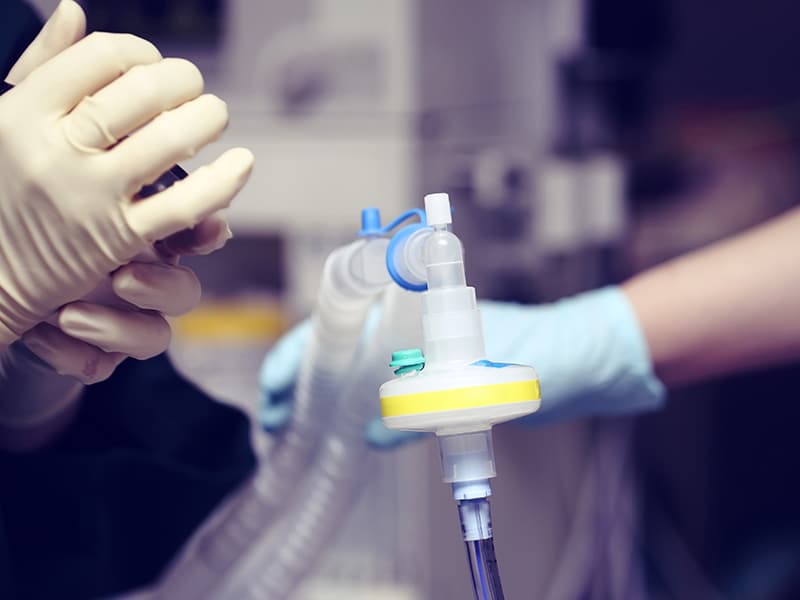When our lungs are healthy, we don’t think twice about the critical purpose they serve, but when COVID-19 attacks lung tissue — its primary target — it makes getting the oxygen we need a struggle and can inflict long-term damage.
In a worst-case scenario, the coronavirus triggers an immune response that does more harm than good, says Stephen Mueller, MD, pulmonologist on the medical staff at Methodist Charlton Medical Center.
“Your body can overreact, and if unregulated, it might have trouble distinguishing enemy cells from good cells,” Dr. Mueller says. “It can hurt or destroy healthy tissue.”
If the infection is severe enough, COVID-19 can lead to acute respiratory distress syndrome (ARDS), a potentially fatal condition.
“COVID-19 affects the lungs in such a dramatic way and so rapidly, that’s why we’re so concerned about this.” — Dr. Stephen Mueller
What is ARDS?
ARDS affects the entire lung and can cause them to fail, Dr. Mueller explains. Some patients need a ventilator to do the breathing for them.
“The lungs lose the ability to do their most important job,” he says, “getting oxygen from the air into the bloodstream and to other organs.”
A significant number of COVID-19 patients in the intensive care unit end up with ARDS, Dr. Mueller says, and that can pose a serious issue.
ARDS causes blood vessels to leak fluid into the alveoli, tiny air sacs where oxygen and carbon dioxide are exchanged, according to the American Lung Association. The normally pliable walls of the alveoli thicken, and it becomes harder for oxygen to pass through.
It may take patients a year to 18 months to fully recover from ARDS. There’s no direct treatment, except for supportive care and using machines to help patients breathe.
ARDS patients may also be more vulnerable to other problems, including pneumonia and collapsed lungs, while in intensive care, according to the CHEST Foundation of the American College of Chest Physicians.
Even after recovering, a small number of patients may see lasting effects, such as feeling short of breath more easily or developing scar tissue in their lungs, Dr. Mueller says.
Pulmonary fibrosis
While anyone can develop ARDS, it’s victims 50 years old or older who are more at risk. A full recovery is possible, but some patients suffer scarring of the lungs, also known as pulmonary fibrosis, Dr. Mueller says.
When ARDS causes fibrosis in the lungs, the normally thin and elastic alveoli become stiffer and less efficient at taking in oxygen.
“It is a very serious illness,” Dr. Mueller says. “It’s one of the most common things that leads to lung transplantation.”
Pulmonary fibrosis has its own long-term implications, including a higher risk of lung cancer and blood clots or infections in the lung, according to the Mayo Clinic.
“Most people do not develop fibrosis,” Dr. Mueller says. “But COVID-19 affects the lungs in such a dramatic way and so rapidly, that’s why we’re so concerned about this.”
More research ahead
Because this new coronavirus behaves so differently from previous viral strains, more research is needed before doctors can predict the health effects of COVID-19 in the years ahead.
Some studies have already been launched to track COVID-19 symptoms and outcomes, including one by the City University of New York Institute for Implementation Science in Population Health and the U.S. Department of Veterans Affairs.
“That is going to be something that’s going to be very valuable: to watch these people who have ARDS and have recovered from ventilators,” Dr. Mueller says.
Until we know more, Dr. Mueller says we should continue practicing social distancing, avoiding crowds, covering our faces with cloth masks, and washing our hands regularly.
“They are all the right things to do, especially now that we have a definite enemy lurking out there,” Dr. Mueller says.

